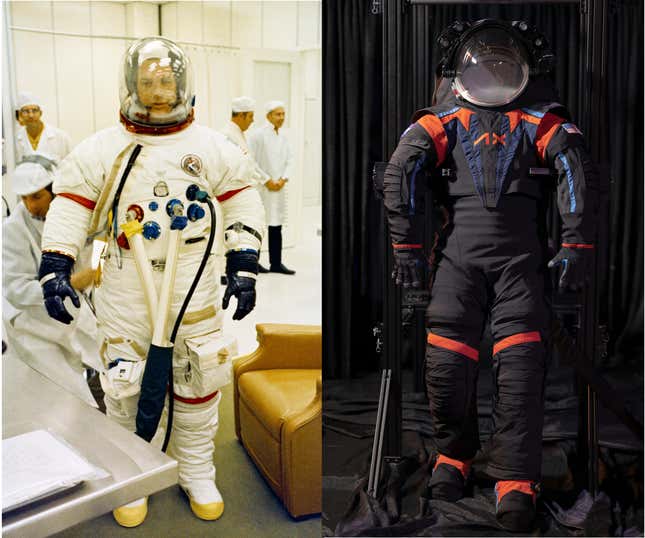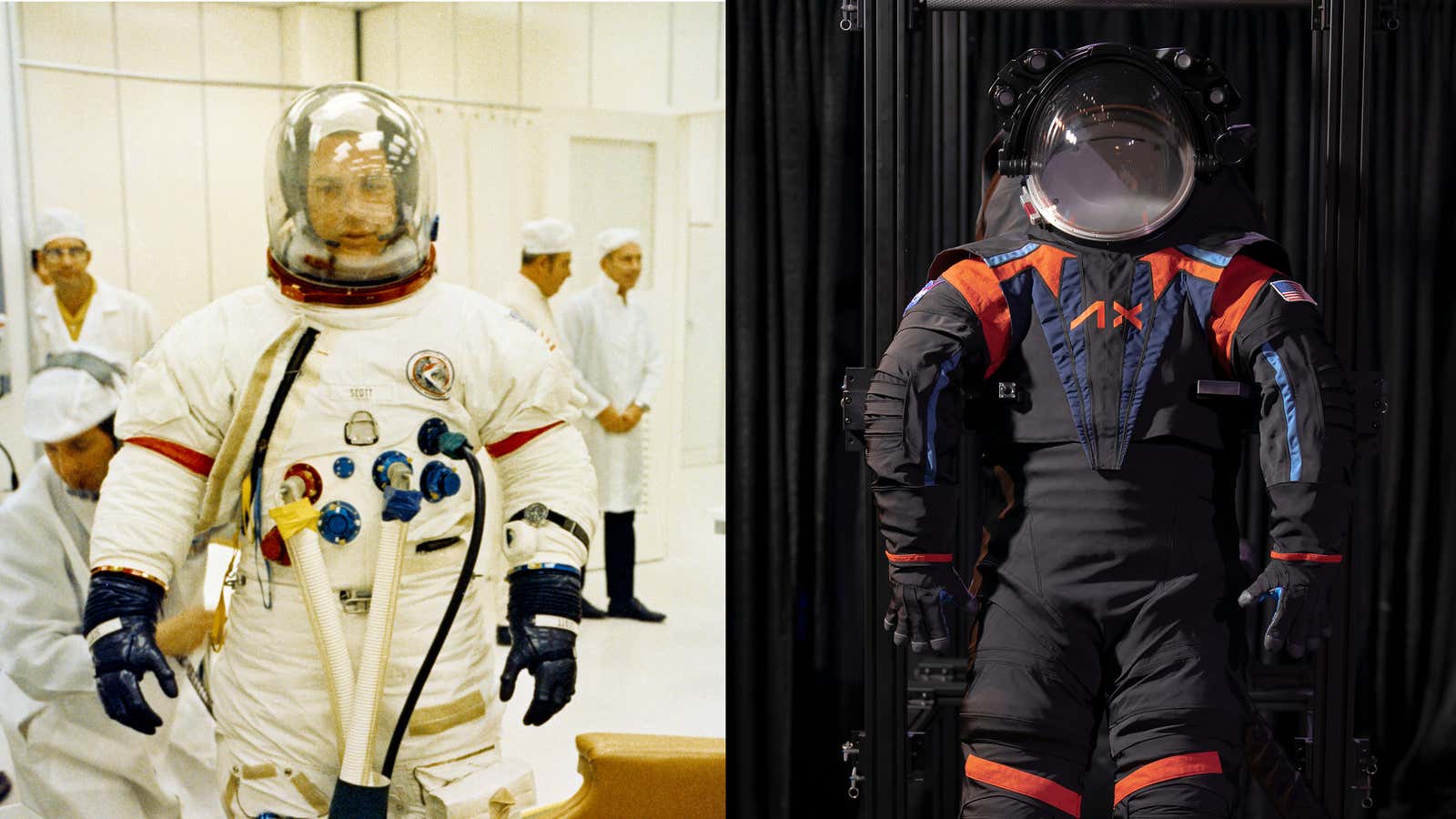NASA’s Artemis program to return to the Moon marked a milestone on March 15 as Axiom Space revealed the space suit it designed for the next generation of moon walkers.
Axiom, a company based in Houston, Texas, was awarded a NASA contract worth more than $1 billion to develop a suit that will allow humans to safely traverse the lunar surface. (The contract does not set a price per suit, but $288 million has changed hands so far.) The suits are based on a NASA design, called the xEMU, which the company has modified. This suit is still not the final version that astronauts will use, which will be finalized in 2025 ahead of the first potential Artemis moon landing.
The makers of the suit say that it will exceed the performance of the original moon suits used by the Apollo astronauts, allowing for astronauts to survive for eight hours on the lunar surface, longer than the Apollo-era suits. The final version won’t be black, either; the covering is designed to hide proprietary features of the suit. On the Moon, the suit will be white to help keep astronauts from overheating in the direct light of the sun.
Advances in materials and construction since the 1960s allow the suit to be lighter and stronger, and include more joints for mobility. An Axiom employee at NASA’s unveiling could squat while wearing the suit, promising more mobility than its stiff-legged predecessors. It also boasts a set of helmet-mounted lights and an HD camera for the rest of us following along back on Earth.
Here’s an Apollo suit and the new Axiom Extravehicular Mobility Unit (AxEMU) side-by-side:

The AxEMU is worn by entering a rear hatch rather than pulling on multiple layers and components. It’s also designed to better accommodate female astronauts, a problem that has deviled the space agency in the past. These suits won’t be fully bespoke, but will instead come in a range of sizes to match the builds of different astronauts.
Gloves are one of the most difficult parts of a space suit to create: They need to be pressurized to make sure that hands are kept warm and protected from the vacuum of space, but flexible enough that fingers can still move. Astronauts can become fatigued by the extra effort require to grasp and manipulate tools. The AxEMU glove appears fairly flexible on Earth:

Here’s a look at Apollo astronaut Charles Conrad’s gloves on the Moon in 1969—they don’t look too flexible. The real test for the AxEMU will, of course, be how it performs during moonwalks, when astronauts will scramble around the lunar South Pole hunting for ice.

Notice all the dust on Conrad’s legs, too. Axiom’s suit designers had to take into account the famous messiness of moon dust, comprised of fine particles that spread widely when disturbed in the Moon’s low gravity. The new suit will be treated to keep dust from adhering to it, but also to keep any dust that does stick to the suit from floating off when astronauts return to their lander—a tricky balance to achieve. There will also be tear-off components that can be ripped off and discarded if they are too dirty.
Axiom’s suit is a tangible example of how close the US is to making its return to the Moon a reality—all the space agency needs now is a lunar lander.
